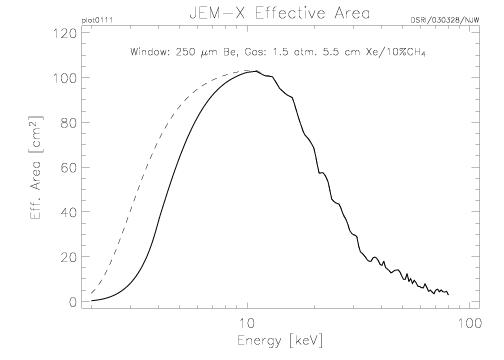 |
with collaborating scientific institutes in Denmark (DSRI Lyngby), Finland (Metorex Espoo, University Helsinki), Spain (University Valencia, INTA Madrid), Italy (INAF/IASF-Frascati, University Ferrara, INAF/IASF-Palermo, INAF/IASF-Bologna), USA (NASA/GSFC Greenbelt), Sweden (Observatory Stockholm), United Kingdom (University Cambridge), Poland (Copernicus Center Warsaw, Space Research Center Warsaw), Russia (IKI Moscow).
The Joint European X-Ray Monitor JEM-X supplements the main INTEGRAL instruments and plays a crucial role in the detection and identification of the gamma-ray sources and in the analysis and scientific interpretation of INTEGRAL gamma-ray data. JEM-X makes observations simultaneously with the main gamma-ray instruments, albeit with a narrower field of view, and provides images with arcminute angular resolution in the 3-35keV energy band. The baseline photon detection system consists of two identical high pressure imaging microstrip gas chambers (1.5 bar, 90% Xenon + 10% Methane). Each detector unit views the sky through its coded aperture mask located at a distance of approximately 3.2m above the detection plane.
Due to unforeseen problems with eroding anodes, detected after launch, the high voltage inside the two JEM-X detectors has been lowered, reducing the gain by a factor of 3 for JEM-X 1 and a factor of 2 for JEM-X 2. As additional safeguard measure, only JEM-X 1 was operated for normal observations for most of the mission lifetime. However, at the time of writing both units are operative.
The dependence of the JEM-X effective area on energy under the current conditions is given in Figure 6.
 |
If you want to know more about JEM-X we recommend that you start with the JEM-X Analysis User Manual [1].